New Boston Historical Society
New Boston, New Hampshire
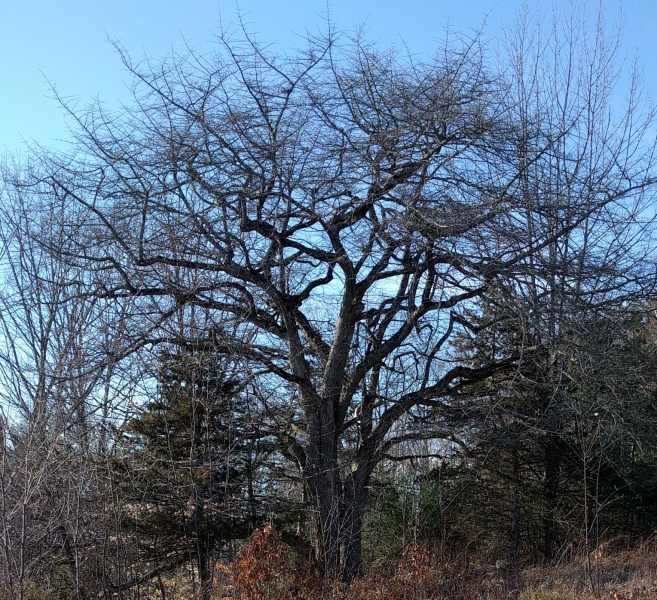
Black Gum tree near the Great Meadow in northwest New Boston
Historic Trees of New Boston
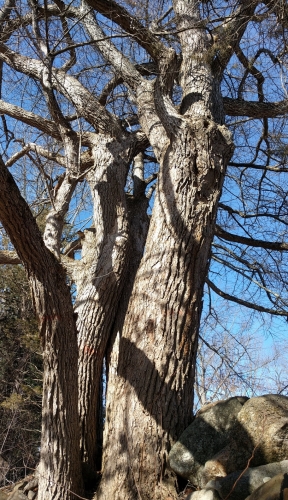 The Great Meadow Tree (c.1500-1600)
The Great Meadow Tree (c.1500-1600)What is the oldest tree in New Boston?
One candidate is the Black Gum at the top of this page, and to the left. It may have been a seedling when Columbus discovered the New World, or when the Pilgrims landed at Plymouth Rock. This Black Gum was a good-sized tree when New Boston's first English-speaking settlers built their farmhouse nearby, alongside the Great Meadow, in the 1750s.
The Musket Tree (c.1700, location unknown)
History books tell us the story of a New Boston tree and Joe English, a Native American who died in 1706:
One day after a weary hunt he [Joe English] had put away his two guns in a hollow tree, which was still alive and growing, to protect them from the dampness of the night. (The father of Deacon James Cochran, of New Boston, found these guns many years after in the same hollow tree, each loaded with three balls.)The story describes Joe's escape from three other Indians who chased him up the hill which now bears his name. Why Joe did not return to collect his valuable muskets is a mystery to me.
One source claims that the guns which Joe hid in the Musket Tree, later to be found by Mr. Cochran, hung over the Cochrans' mantelpiece until their house burned down in the late 1800s. You may read more about Joe at our Joe English page.

4th of July celebration in front of Town Hall with elm trees
Older residents of New Boston remember the magnificent elm trees which once lined River Road and Meetinghouse Hill Road.
Bob Todd thinks these trees were first planted in the 1830s. The photo above shows July 4th celebrations in 1913, New Boston's 150th year.
Dutch Elm Disease arrived in New England in the 1920s. By this time, the chestnut trees which gave Chestnut Hill its name were suffering from chestnut blight; most of these trees have disappeared, too.
Apple Trees (1900s)
Money doesn't grow on trees but apples do. New Boston had more than a few productive apple orchards. In 1894, the first year of the new railroad, 12,000 barrels of apples were shipped from New Boston for export to Europe.
Jim Dane remembers climbing a 25-foot ladder to pick apples for Fred Cann in the 1940s. He was paid 10 cents a box and could fill 100 boxes a day, five or six days a week. Fred and his wife and their daughter Dottie owned the Mapadot Orchard (Ma + Pa + Dot) which the Young family operated until the 1990s.
J.R. Whipple's 1908 cider mill on the Francestown Road produced "sweet cider, dry cider, cider champagne and cider vinegar of unmatched quality". Paul Saltmarsh purchased the mill in 1944. David Stanford remembers that Paul "would tip dumptruck-loads of Macintosh apples, with leaves, bugs and stems for added panache, and out streamed the greatest apple juice I ever had."
The Black Birch (until 2018)
Until quite recently, New Boston was the home of the biggest black birch in the United States. It was a particular favorite of John and Heidi Palmer, on whose land it stood. The big tree fell in January 2018, probably during an ice storm.

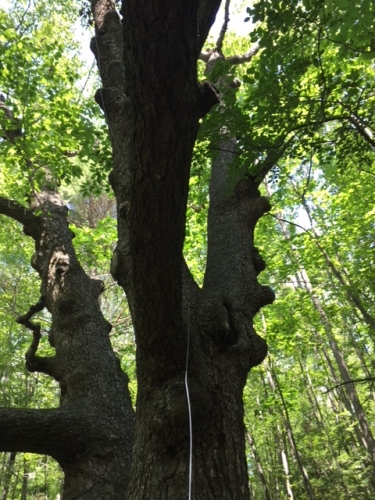
The Black Birch in 2017
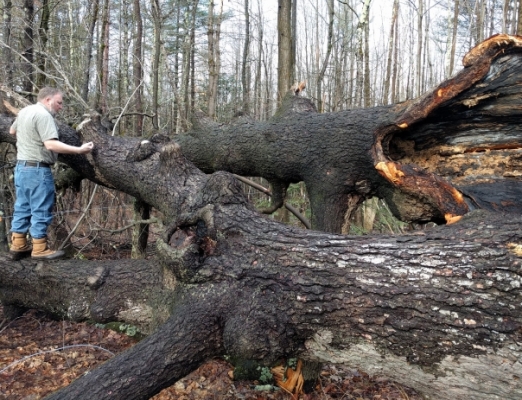
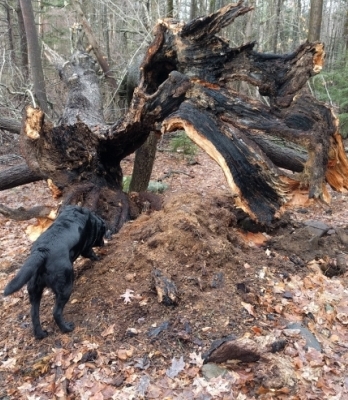
The Black Birch in 2018
 Countless trees have been cut down in New Boston over the centuries.
Tall pines were used for masts for the Royal Navy, while other trees were turned into matchsticks in Philbrick's match factory.
What determines whether a tree is harvested or grows to a ripe old age?
Countless trees have been cut down in New Boston over the centuries.
Tall pines were used for masts for the Royal Navy, while other trees were turned into matchsticks in Philbrick's match factory.
What determines whether a tree is harvested or grows to a ripe old age?A.J. pointed out one towering oak tree that might be 100 years old. It is in an inconvenient location down a steep hillside, and its many branches reduced its value for lumber, so no one bothered to cut it down.
Some trees at the edge of a field or along a roadside are used for fenceposts. A.J. told me of the time he was called to Derry, N.H., to the farm which once belonged to a Famous Poet. A maple tree was nearly dead and had to be taken down. It was a historic tree, which had been mentioned in some of Frost's poems, and the State Park people wanted the tree cut up and the wood made into something memorable. Inside the tree was embedded fence wire, which can't have done much good for A.J.'s chain saw. After he worked around that, his replacement chain discovered deep within the tree an old metal "spile" — something the late poet might have hung a sap bucket on.
Photo (left) of an old tree alongside Saunders Hill Road in New Boston.
Let me know if there are other historic trees to add to this page!
— Dan Rothman townfarm@comcast.net
